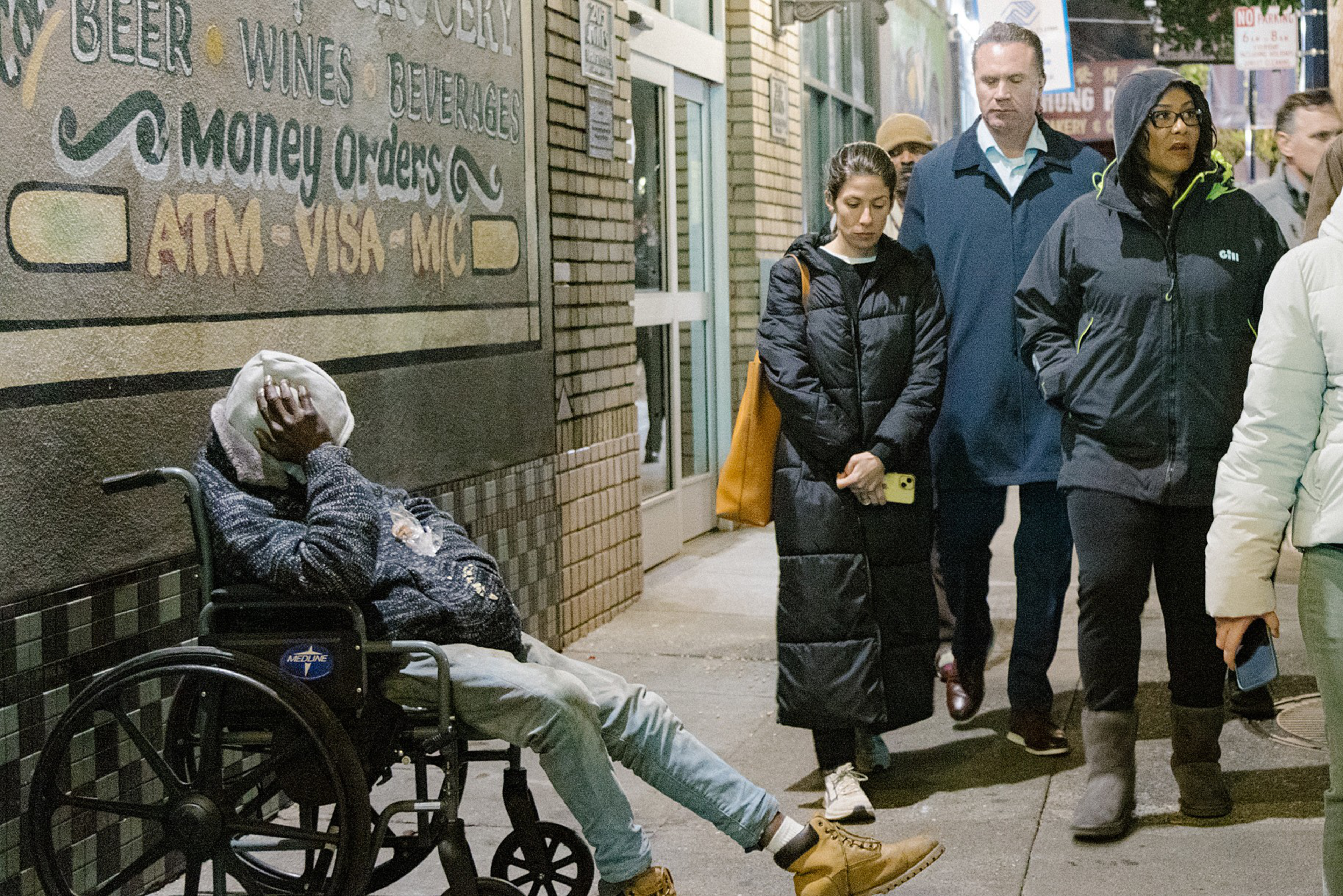San Francisco’s count of homeless people was so confusing this year that the city was compelled to recount four different areas, according to city officials.
In the aftermath of the biennial count, which provides an estimate of the thousands of people living on the streets and is required to access millions in federal funding, the founder of one of the nonprofits responsible for conducting the count said on Monday that it had been banned from participating in future counts.
A spokesperson for the Department of Homelessness and Supportive Housing did not respond to questions about whether it had issued a ban.
Update: Following the publication of this story on Tuesday morning, the nonprofit’s founder Del Seymour told The Standard he was assured by the homelessness department that his nonprofit, Code Tenderloin, is in good standing with the city and will continue to participate in future point-in-time counts. A department spokesperson confirmed that account.
However, there continued to be widespread confusion following the Jan. 30 homeless counts. A report by The Standard published on Feb. 1 depicted a feeling of disarray among homeless count volunteers—who notably included Mayor London Breed—on the night of the count. That report was followed by city officials ordering recounts of four routes in the Tenderloin neighborhood.
The recount was due to an “effort around quality assurance,” the homelessness department said in an email on Friday afternoon.
However, after The Standard quizzed homeless department staffers and the Mayor’s Office, officials appeared to backtrack on Monday, saying they decided not to use the new data and claiming the initial count was done in alignment with best practices.
Code Tenderloin, a nonprofit that had 47 volunteers working on this year’s count, said on Monday that the city cut communications with them on matters regarding the count since The Standard’s reporting. The story highlighted confusion on the correct way to carry out the count by volunteers, city officials and the nonprofit’s founder, Del Seymour.
Seymour said Monday that The Standard’s article cast doubt on the data obtained by his nonprofit’s team of volunteers, which he emphasized are not employees.
Seymour, who has worked the count for a decade in various roles, said he believes the data obtained by his volunteers was legitimate and that the issues lie in the methodology of the count.
“The [‘point-in-time’] count is a very inaccurate count. It’s a great estimation, but it comes nowhere close to an accurate count,” Seymour said. “So I don’t see a need to go out and do a recount.”
City officials and Code Tenderloin did not clarify if all four routes that were recounted were the nonprofit’s initial responsibility. The nonprofit was tasked with counting homeless people in 24 areas of the city.
The recount casts even more doubt on the data retrieved from homeless “point-in-time” counts, which critics already say are majorly flawed. Even Mayor Breed said she was confused by the practice during January’s count. The Mayor’s Office did not respond to requests for comment for this story.

In a subsequent statement on Monday afternoon, the department said it decided not to use the recount data after all.
“[The department] did revisit four routes in the Tenderloin as part of our efforts to make sure that the count was conducted properly,” the statement read. “That said, our concerns about people’s movement and the inability to de-duplicate had led to a decision not to use the data collected the second night.”
‘Inadequate process’
Paul Boden, executive director of the homelessness nonprofit Western Regional Advocacy Project, said the mishap was predictable. He contends the point-in-time count overlooks people who aren’t visibly homeless and that a more accurate number lies in the demand for services.
“This is the type of stuff that comes up when you have an inadequate process. … Think of all the dweebs involved in this,” Boden said, referring to the army of bureaucrats in charge.
The federal government requires major cities to conduct the point-in-time count every other year in order to receive millions in funding to battle homelessness. Two years ago, 4,397 people were counted as living on the streets of San Francisco, a 3.5% decrease from two years prior. The figures from this year’s count are expected to be finalized this summer.
The United States Department of Housing and Urban Development did not respond by publication time to questions about whether any recount would affect San Francisco’s homelessness funding.
Supporters of the count argue it serves as a relatively consistent snapshot of the homelessness crisis because the methodology usually stays the same. But during this year’s count on Jan. 28, groups followed different protocols for determining whether someone is homeless.

One group, which The Standard accompanied in SoMa, spoke with most homeless people they encountered, gathering names, ages and other personal information. The group also provided homeless people with snacks, water and medical supplies such as Narcan, an overdose reversal drug.
Meanwhile, a group accompanied by the mayor did not engage with homeless people, instead determining whether someone was homeless by their appearance.
Emily Cohen, a spokesperson for the homelessness department, told The Standard in an interview following the count that the latter approach was the correct methodology.
But Seymour told The Standard there was bewilderment on this matter, alleging the city didn’t provide clear instructions one way or another, leaving him to believe they were in agreement on the protocol.
In the Tenderloin and SoMa neighborhoods, Seymour explained on Monday, it’s tough to determine whether someone is homeless because of the prevalence of drug use.
“It’s very difficult to make that distinction between a drug vacationer, a drug dealer or an actual homeless person,” Seymour said. “We didn’t have the proper understanding of how to make that distinction.”
Clarification: Based on new information, this story has been updated to confirm that the Code Tenderloin nonprofit has not been banned from future homeless counts. The original headline “Nonprofit banned after botched San Francisco homeless count” has been updated.

